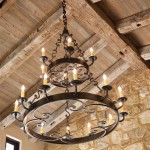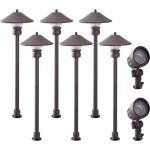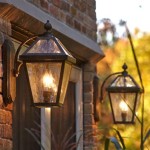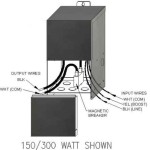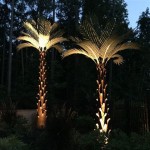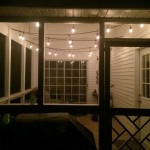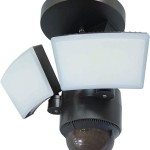Outdoor Strobe Light Fire Alarm System: Ensuring Safety Beyond the Walls
Fire safety is paramount, extending beyond the confines of buildings and into outdoor environments. Traditional fire alarm systems are primarily designed for indoor use, leaving outdoor areas vulnerable. Outdoor strobe light fire alarm systems provide a critical solution for alerting individuals to fire emergencies in locations lacking traditional auditory cues or where ambient noise levels are high. These systems are specifically engineered to withstand harsh weather conditions and provide effective visual signaling, enhancing overall safety and emergency response capabilities.
This article delves into the intricate details of outdoor strobe light fire alarm systems, exploring their functionality, components, applications, installation considerations, maintenance requirements, and the relevant standards and regulations governing their use. Understanding these facets is crucial for effective implementation and ensuring the reliability of these life-saving systems.
Functionality and Components
The fundamental function of an outdoor strobe light fire alarm system is to provide a clear and conspicuous visual warning of a fire emergency. These systems are designed to operate independently or in conjunction with existing indoor fire alarm systems. A comprehensive outdoor strobe light fire alarm system incorporates several key components working in concert to achieve this objective.
The core components typically include:
- Control Panel: This is the central processing unit of the system. It monitors the sensors, receives signals from detectors, and activates the strobe lights. The control panel is usually housed in a weatherproof enclosure to protect it from the elements. It often includes battery backup to ensure operation during power outages.
- Fire Detectors: These sensors detect the presence of fire or smoke. Common types include smoke detectors, heat detectors, and flame detectors. Outdoor fire detectors are specifically designed to minimize false alarms caused by environmental factors, such as wind, rain, and temperature fluctuations.
- Strobe Lights: These high-intensity lights emit bright, flashing signals designed to attract attention, even in bright sunlight or during periods of heavy precipitation. Outdoor strobe lights are typically weatherproof, UV-resistant, and designed to meet specific candela output requirements. The candela rating determines the intensity of the light and its visibility at different distances.
- Manual Pull Stations: These devices allow individuals to manually activate the alarm system. Outdoor pull stations are typically housed in protective enclosures to prevent accidental activation and protect them from the elements.
- Notification Appliances (Audible and Visual): While the primary focus is on visual notification through strobe lights, some systems may also incorporate audible alarms, such as horns or voice evacuation messages, especially in areas of limited visibility. The combination of both audible and visual signals provides redundancy and caters to individuals with different sensory needs.
- Wiring and Cabling: The interconnectivity of the system relies on durable wiring and cabling that are resistant to outdoor conditions, including moisture, temperature extremes, and UV radiation. Conduit is typically used to protect the wiring from physical damage.
- Power Supply: The system requires a reliable power supply, typically consisting of a combination of mains power and battery backup. The battery backup ensures continued operation during power outages, a critical feature for life safety systems.
These components work together seamlessly. When a fire detector senses smoke, heat, or flames, it sends a signal to the control panel. The control panel then activates the strobe lights and, if included, the audible alarms. Manual pull stations allow individuals to immediately activate the system if they observe a fire before the detectors trigger the alarm.
Applications of Outdoor Strobe Light Fire Alarm Systems
Outdoor strobe light fire alarm systems find application in a variety of settings where traditional indoor systems are inadequate or impractical. These include:
- Construction Sites: Construction sites are inherently hazardous environments with a high risk of fire incidents. Outdoor strobe light fire alarm systems provide a critical layer of protection for construction workers and visitors, alerting them to fire emergencies amidst the noise and activity of the site.
- Industrial Facilities: Industrial sites with large outdoor storage areas, processing plants, or hazardous material handling require reliable outdoor fire alarm systems. Strobe lights are particularly effective in these environments due to the high ambient noise levels and the need to alert personnel working in geographically dispersed areas.
- Campgrounds and Recreational Areas: Campgrounds and recreational areas often lack permanent structures and rely on open spaces. Outdoor strobe light fire alarm systems provide a means of alerting campers and visitors to fire dangers, particularly in remote areas where cellular communication may be limited.
- Agricultural Settings: Farms and agricultural facilities often have large open areas susceptible to wildfires or accidental fires. Outdoor strobe light fire alarm systems can provide early warning to workers and residents, allowing them to evacuate safely and protect livestock and property.
- Outdoor Events and Gatherings: Concerts, festivals, and other outdoor events present unique fire safety challenges. Temporary outdoor strobe light fire alarm systems can be deployed to provide emergency notification in case of a fire incident.
- Fuel Storage Facilities: These facilities pose a significant fire risk due to the presence of highly flammable materials. Outdoor strobe light fire alarm systems are essential for providing early warning and enabling rapid evacuation in the event of a fire.
- Warehouses and Storage Yards: Large outdoor storage yards can be challenging to protect with traditional fire alarm systems. Outdoor strobe lights provide a highly visible means of alerting personnel to potential fire hazards.
The specific requirements of each application will dictate the type, placement, and configuration of the outdoor strobe light fire alarm system. A thorough risk assessment is essential to determine the appropriate level of protection needed.
Installation, Maintenance, and Regulatory Considerations
Proper installation, regular maintenance, and adherence to relevant standards and regulations are crucial for the effective operation and reliability of outdoor strobe light fire alarm systems. Improper installation can compromise the system's functionality, while inadequate maintenance can lead to system failures.
Installation Considerations:
- Professional Installation: Outdoor strobe light fire alarm systems should be installed by qualified and licensed professionals with experience in fire alarm systems. This ensures that the system is installed correctly and in accordance with applicable codes and standards.
- Weather Protection: All components of the system must be adequately protected from the elements. This includes using weatherproof enclosures for the control panel, detectors, and strobe lights, as well as using appropriate wiring and cabling that are resistant to moisture, temperature extremes, and UV radiation.
- Placement and Visibility: The placement of strobe lights is critical to ensure maximum visibility. They should be positioned at strategic locations where they can be easily seen from all areas of the protected zone, taking into account factors such as terrain, obstructions, and ambient light levels. The mounting height should also be considered to avoid glare and ensure optimal visibility.
- Power Supply: A reliable power supply is essential for the system to function properly. This typically involves a combination of mains power and battery backup. The battery backup should be sized to provide sufficient power for the system to operate for a specified period of time during a power outage, as required by local codes.
- Wiring and Grounding: Proper wiring and grounding are essential for the safe and reliable operation of the system. All wiring should be installed in accordance with applicable electrical codes, and the system should be properly grounded to prevent electrical hazards.
Maintenance Requirements:
- Regular Inspections: Outdoor strobe light fire alarm systems should be inspected regularly to ensure that all components are functioning properly. The frequency of inspections will depend on the specific requirements of the system and applicable codes and standards.
- Testing: The system should be tested periodically to verify that the strobe lights are functioning correctly and that the control panel is responding to alarm signals. Testing should be conducted in accordance with the manufacturer's recommendations and applicable codes.
- Battery Replacement: The battery backup should be replaced periodically to ensure that it can provide sufficient power during a power outage. The replacement interval will depend on the type of battery and the manufacturer's recommendations.
- Cleaning: The strobe lights and detectors should be cleaned regularly to remove dirt, dust, and other debris that can impair their performance.
- Component Replacement: Any damaged or malfunctioning components should be replaced promptly to ensure that the system remains operational.
- Record Keeping: Detailed records should be maintained of all inspections, tests, and maintenance activities. These records can be used to track the performance of the system and identify any potential problems.
Regulatory Considerations:
- National Fire Protection Association (NFPA) Standards: NFPA standards, such as NFPA 72 (National Fire Alarm and Signaling Code), provide comprehensive guidelines for the design, installation, inspection, testing, and maintenance of fire alarm systems, including outdoor systems. Compliance with NFPA standards is essential for ensuring the safety and reliability of these systems.
- Local Codes and Ordinances: Local building codes and fire ordinances may have specific requirements for outdoor strobe light fire alarm systems. It is important to consult with local authorities to ensure compliance with all applicable regulations.
- Americans with Disabilities Act (ADA): The ADA requires that fire alarm systems be accessible to individuals with disabilities. This includes providing visual notification for individuals who are deaf or hard of hearing. Outdoor strobe light fire alarm systems can help meet these requirements by providing a clear and conspicuous visual warning of a fire emergency.
- Underwriters Laboratories (UL) Listing: Ensure that the components used in the system are UL listed for their intended application. UL listing indicates that the components have been tested and certified to meet recognized safety standards.
Adherence to these installation, maintenance, and regulatory considerations is crucial for ensuring that outdoor strobe light fire alarm systems provide effective fire protection and comply with all applicable requirements. Regular training for personnel responsible for the operation and maintenance of these systems is also highly recommended.

System Sensor Standard Cd Outdoor Strobe Red Fire And Safety Plus

Red Outdoor Strobe Zions Security Alarms Adt Authorized Dealer

System Sensor Srk Strobe Red W Backbox Rybb Fire Alarm

Anti Intrusion 12v 24v Outdoor Strobe Siren For Alarm System China Sirena De Alarma Fire Made In Com

System Sensor P2rhk Warning Lights Sirens Specifications

Fire Alarm Outdoor Waterproof 3 Tones Electric Strobe Siren

Outdoor Fire Alarm System Rsswpa 2475w Alw Amber Strobe Light With Alert Lettering By Eaton

Fire Alarm Outdoor Waterproof 3 Tones Electric Strobe Siren

System Sensor P2rk Spectralert Advance Multi Candela Outdoor Horn Strobe Red

Fire Strobe Loud Siren Alarm Sumring
Related Posts
